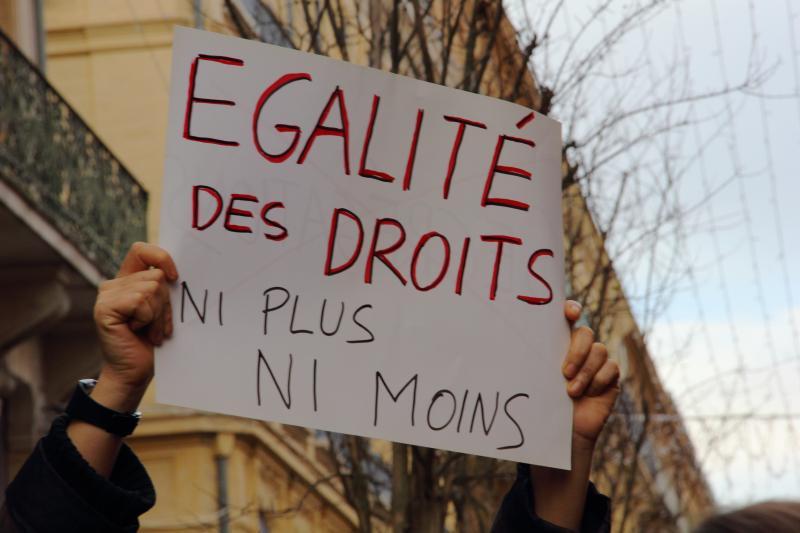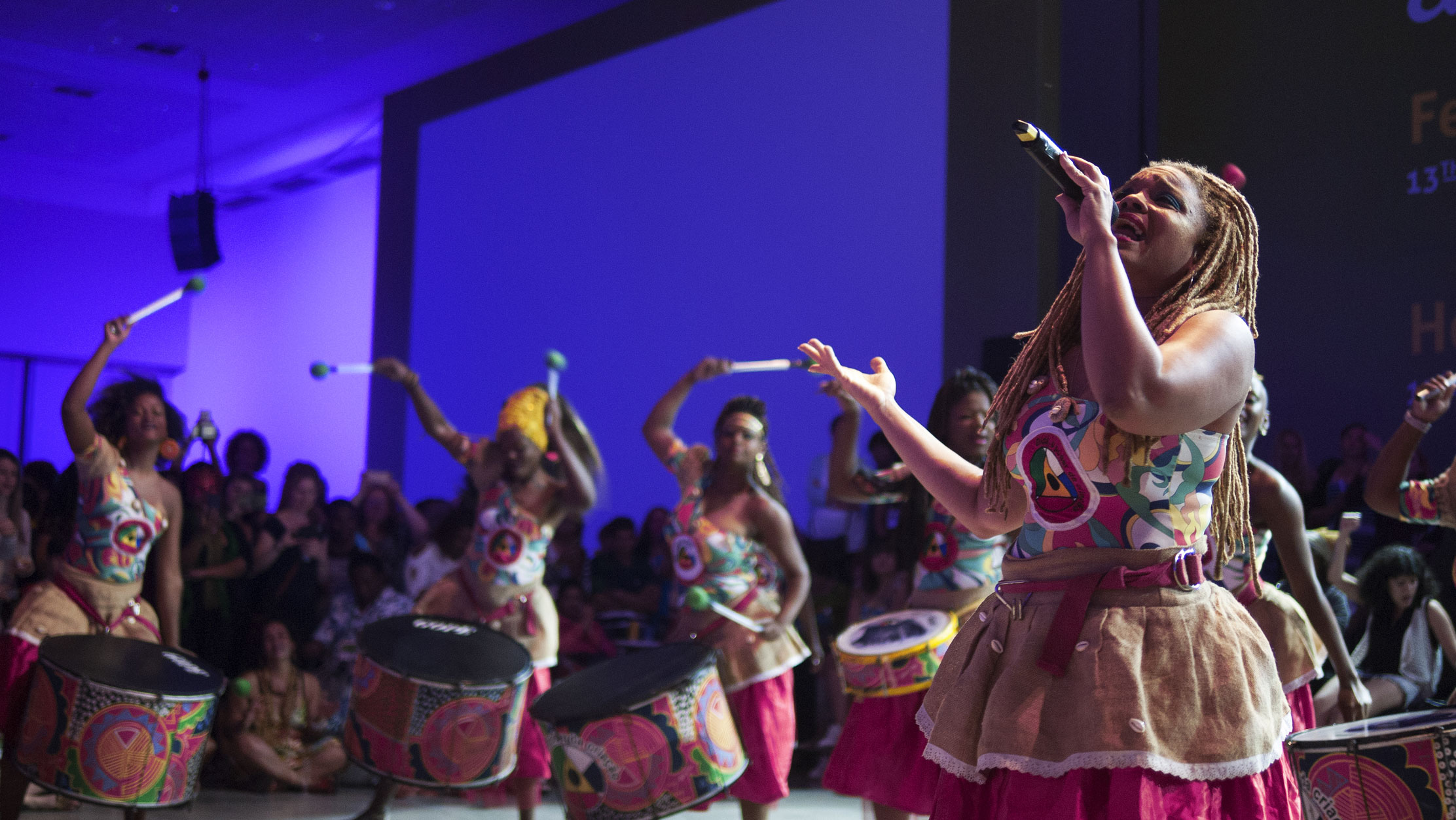FRIDAY FILE: Three months after the enactment of the Framework Law for true Equality between Women and Men in France, AWID spoke to women’s and LGBTQI rights activists about the various components of French policy on gender equality, to learn more about its limitations.
By Mégane Ghorbani
During the cabinet reshuffle of August 26, 2014, the Ministry of Women's Rights, established in May 2012 and recast as the Ministry of Women's Rights, Urban Affairs, Youth and Sports in April 2014, was eliminated altogether. The downgrading to a State Secretariat for Women's Rights under the Ministry of Social Affairs, Health and Women's Rights has spurred the indignation of part of the feminist movement, as it not only reneges on a promise made by President Francois Hollande during his election campaign in May 2012, but it is also a reversal of legal and institutional gains.
Good on paper, lagging in practice

Since 2012 France has made significant progress in terms of institutional and legal gender equality. However, the establishment of a ministry dedicated to women's rights, the fight against violence against women, laws opening marriage and adoption to same-sex couples and a framework law on equality between women and men have resulted in questionable progress in reality.
According Yveline Nicolas, coordinator of the association Adéquations: "The first gain was the creation of a Ministry of Women's Rights in 2012, a fully functional Ministry, which was a major event in France as there had been no Ministry or dedicated State Secretariat for many years.The Minister of Women's Rights was also a government spokesperson, giving the role particular significance. Butin April 2014 it changed to the Ministry of Women's Rights, Urban Affairs, Youth and Sports, which would inevitably reduce the human and material resources earmarked for women's rights. During the ministerial reshuffle on August 26, women's rights were further relegated to social affairs, within the Ministry of Social Affairs, Health and Women's Rights - another step backward because, instead of considering gender equality as a cross-cutting issue, it relegates women to social affairs."
On violence against women, the law of August 6, 2012 offers a more accurate and broader definition of sexual harassment, a law protecting women victims of violence and trafficking was also adopted in August 2013, as well as the fourth plan to fight against this form of violence for the 2014-2016 period and the circular of August 7, 2014 that reinforced the Protection Ordinance introduced in 2010 and issued by judges in cases of violence. According to Laetitia Franquet, Doctor in sociology, specialized on issues of violence against women, "there has been legislative progress in relation to the legal framework but there is no judicial progress. For Protection Ordinance, there is a large gap between the number of restraining orders filed, versus the number retained by the prosecution. While the Ordinance says that supporting evidence is not necessary, the reality is different, where building a very strong case with lots of supporting evidence is required. So the legal framework is improving but we still can't say that women are better protected by the law."
The law of 17 May 2013, opening marriage and adoption to same-sex couples in France, has had two major effects. According to Arnaud Alessandrin, Doctor in sociology and researcher on gender and sexualities, "on the one hand it has expanded rights to those who did not have them beforehand. From this point of view, legally at least, heterosexual privilege has been reduced. Moreover, this law had an impact on the social life of the country by redrawing the frontline between homophobia,which had not expressed itself in such a manner since the debate on the PACS (Civil Solidarity Pact), and defendants of marriage for all. But in practice, there have been some adoption processes that faced recalcitrant courts and some mayors have refused to marry same-sex couples. The persistent barriers are symbolic pitfalls that lend credence to the idea that unequal treatment between homosexual and heterosexual couples is justified and perhaps even that this law is on borrowed time”.
The Framework Law of August 4, 2014 for true Equality between Women and Men covers many topics, including workplace equality, the fight against financial insecurity, violence,representation and stereotypes, forced marriages and gender parity. But Nicolas notes a contradiction between policy and budget allocations, “In announcing budget restrictions everywhere, administrative reorganization that overloads decentralized state services responsible for developing regional action plans to address inequalities; while simultaneously voting for ambitious laws that require multi-year efforts. Because we won't eradicate gender violence and stereotypes or establish equal sharing of domestic work between women and men in only a few years."
Reduced resources and limited French official development assistance (ODA) for gender
Beyond these institutional and legal constraints, civil society organizations, who are major actors in mobilising for gender equality, face a range of difficulties that French policy does not address. Despite the creation of a High Council for Equality between Women and Men in early 2013, dedicated to dialogue between civil society and policy makers; lack of resources and financial support for the advocacy work and expertise of civil society prevents them from influencing policy. As Nicolas stresses,"These advisory bodies may not have the will nor the means to facilitate discussions and consultations within their "family of stakeholders". The voluntary sector in France is also in a deep layoff crisis, to the point that a parliamentary inquiry commission has been established. While France is the fourth largest international donor with nearly 10 billion Euros in annual funding, women's groups and feminists do not receive much support, and one could say that many are in the gendered position of unpaid labor and the invisibility of women's issues." This lack of resources creates unhealthy competition among organizations defending gender equality and thus has a direct impact on the associative sector itself. As a result we're witnessing a fragmentation of civil society particularly at the level of alliances between certain LGBTQI movements and certain feminist movements, according to Alessandrin.
France has recently, appeared to be creating a more supportive environment for the introduction of gender in development policy, as shown by the establishment of a cross-cutting framework for action on gender and gender inequality by the French Development Agency(AFD) and the second Document Strategic Orientation Document (DOS) on Gender by the Ministry of Foreign Affairs and International Development (MAEDI), which was revised after a participatory evaluation of the first DOS on Gender. According to Claudy Vouhé, President of the association Genre en Action, women’s and feminist organisations have benefited, since the last administration, by the work of the Ministry for Women's Rights, which called for all policy be evaluated on how it impacts gender equality, including French development aid policy. She adds, “This is a result of work done by gender advocacy organizations, and the pressure from the OECD which develops reports, including peer reviews, where the lack of gender consideration has been pointed out."
However, in terms of gender-inclusive frameworks developed within the French aid sector, there are still gaps, such as private sector development in this field, or a misunderstanding that gender is simply equality between the sexes. "There's a whole economic argument that increasingly appears in ODA. We are also far from including LGBTQI issues, as well as more of a women's rights perspective, and it’s difficult to achieve a true understanding of intersectionality," says Claudy Vouhé. Besides, she explains that despite AFD's ambitious goals to inform all its operations using OECD-developed gender indicators by 2017, “there is a key accountability problem because a significant part of the funding evades these indicators. Measuring MAEDI and AFD budgets allocated to gender remains difficult.”
AFD aspire for at least 50% of funds to be under indicators 1 or 2, ie. where gender is main or major objective1, Claudy Vouhé notes however that gender indicators can be applied to budgets of institution-led projects within the framework of bilateral aid initiatives but not within the framework of multilateral aid, and given that 20% of French aid is via the European Commission, with no indication as to how those funds are earmaked. Additionally, French ODA is focused on areas that take very little account of gender, such as infrastructure.
The United Nations, is an international space for important discussions on Sustainable Development Goals (SDGs), Beijing +20, among others, and an opportunity for including a gender perspective in development policies, Vouhé emphasizes "there is more and more openness to these issues but smaller associations do not have the means to access these spaces. It is very difficult for small associations to keep track of what's happening at the political level. This raises the question of strengthening the capacity of organizations to understand what is happening at that level but also training UN staff to be more aware and sensitive to women's associations working conditions. "
1 The three levels of the gender indicator: 0 if gender equality is not targeted; 1, when it is a major objective; 2, where it is the main objective. For more information, see: http://capacity4dev.ec.europa.eu/system/files/file/01/12/2010_-_1435/How_to_apply_the_G-Marker.pdf
